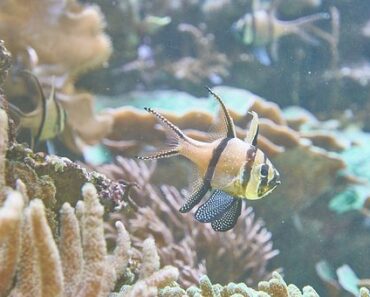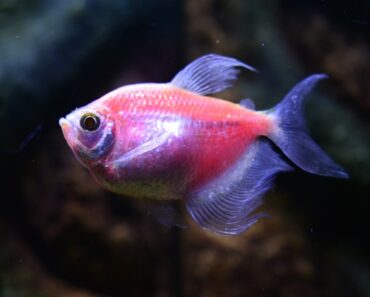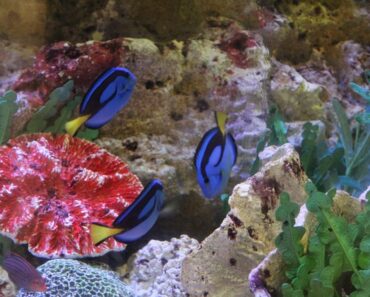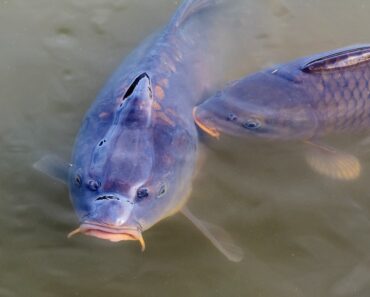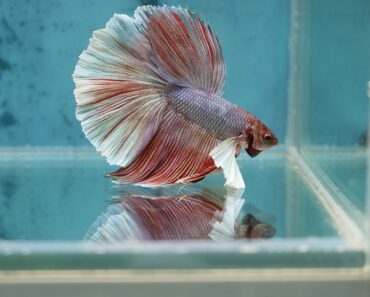
Reproduction methods in fish are extremely varied. This is why it is up to you to know the species you want to reproduce, which requires good prior documentation. On the other hand, it is necessary to make sure before anything else that you have enough room to accommodate dozens of future fish.
The most common aquarium fish can be oviparous or ovoviviparous.
Oviparous or ovoviviparous?
In ovoviviparous fish, eggs develop in the mother’s womb. The fish then give birth directly to fry, which are able to swim and feed. Viviparous fish are generally very prolific (several dozen fry per clutch). Females may give birth to fry several times after being separated from the male, as they are able to retain the seed for some time. Their reproduction is easy and accessible to beginners. Among the most common are the Platys (Xiphophorus), Guppys and Mollys (Poecilia) and Xiphos (Xiphophorus).
The oviparas on the other hand lay eggs, which will be fertilized and then incubated in the aquarium. The maturation of the eggs is of variable duration, ranging from about ten days to several weeks depending on the species. During this period the egg draws on its reserves and no food is needed. Once mature, the egg releases a fry. This is the case of the combatants (Betta), killies (Aphyosemion) and Danios zebras (Brachydanio rerio). The reproduction of oviparous fish is more delicate than for ovoviviparous fish. Their requirements are also stricter with regard to water quality, as the eggs are very sensitive to pollutants.
The choice of parents
In any case, you must of course have at least one male and one female. For some species, sexual dimorphism is well marked, and you will have no difficulty in differentiating between the sexes. For others, it is not an easy task. The solution, if the size of your aquarium allows it, is then to take a group of 5 or 6 fish. This way you will have a high probability of having fish of both sexes in the batch. Moreover it is necessary to know that some males do not accommodate only one female: if the two partners are not compatible the reproduction will not take place. The ideal is often to have 3 or 4 females for 1 male.
Conditioning for reproduction
Fish, like most animals, will only reproduce if their living conditions are optimal. They must therefore be in good health. Food is a key element for the reproduction of fish: parents need a preliminary “food conditioning” phase of about 15 days, during which the use of excellent quality food, either live or frozen, is recommended. In some species (Danios…) it may be advisable to separate males from females during this phase, and only bring them together for spawning. This separation can be achieved by installing a partition in the tank for example.
The water must also be of excellent quality with regard to biochemical parameters (ammonia, nitrites, pH) and at the temperature adapted to the species in question. Viviparous fish, which are very prolific, tolerate however a little more flexibility: spontaneous reproduction in the aquarium, without any human intervention, is regularly observed. On the other hand, some fish may need a trigger factor to reproduce, such as a drop in water hardness, or a slight rise in temperature.
Spawning process
During the reproductive phase called “spawning”, the male pursues the female to fertilize her. A pregnant female can be identified by her rounded belly. She will then give birth to fry (ovoviviparous) or eggs (viviparous).
The reproduction of the fighter can be done in an aquarium of about twenty liters. The female is then presented to the male, but without any contact being possible (for example by placing her in a transparent bottle pierced with holes, or in a small net cage). If his care conditions are optimal and he feels well, the fighting male will develop a nest of bubbles on the surface of the water. It is then time to release the female. As spawning is quite violent, hiding places are necessary to allow each fish to protect itself from its partner. The female expels the eggs, which the male retrieves from the bottom of the aquarium to place them in the bubble nest. Be careful, to avoid that these round trips exhaust him too much, the water height should not exceed 15 cm. Afterwards, the female must be removed from the aquarium.
Which material?
Ideally, a breeding tank should be set up to protect the eggs and fry from cannibalism and attacks by adults in the community tank. The spawning and egg-laying then take place in the reproduction tank, then the parents are removed from the tank.
Oviparous fish can be laid in different ways: in open water (the eggs are dropped into the water and deposited at the bottom of the tank) or on a substrate.
-For oviparous fish that lay eggs in open water (Danios), you can place a grid at the bottom of the reproduction tank, in order to create a double bottom: the eggs will fall under the grid and will be protected from the parents. A dark-bottomed tank will allow you to check the presence of the eggs before removing the parents.
-For laying fish on substrate (Killies), it will be necessary to provide in the reproduction tank a support of laying (peat, plants, or “mop” manufactured using wool threads of dark color hung on a cork). You can also have the fish lay on the substrate in a community tank, then collect the eggs and put them in incubation apart.
Some breeding tanks are designed as extensions of the community tank, and are fed with the same water. In the case of oviparous fish, remember that the eggs are very sensitive to pollutants: the water quality must be perfect. If the two tanks are separated, the temperature will ideally be slightly warmer in the breeding tank than in the maintenance aquarium, and the pH may be a little more acidic. The breeding tank should also have a filter with a minimum flow rate to prevent it from sucking in eggs and fry. The use of a foam filter is recommended.
If you do not have such a tank, some fry may survive in their parents’ aquarium. It is then imperative to provide them with hiding places adapted to their small size (piles of stones, moss, plants).
Another alternative is the use of a floating nest box or a net cage. Installed in the community tank, these devices allow the fry to be protected from other fish, without having to install a second tank. This maximizes the number of live fry, which is only a good thing if you have the opportunity to care for them at a later date. The pregnant female is placed in the tank before spawning.
It is preferable that the floating nest box be as spacious as possible to avoid the stress of confinement for the female. Also avoid placing several females at the same time. Plastic nests are equipped with lateral slots to allow water circulation. Be careful however that they are not too wide, otherwise the fry could come out of the nesting box…
Fry rearing
You will need to feed the fry with age-appropriate food. Some commercially available kits offer food with a grain size adapted to the fry for the first three weeks. Fine powdered flakes, artemia nauplia or infusers may be suitable. The fry should be fed at least two to three times a day for the first week in small quantities. The major difficulty is that they need very clean water, but waste a lot of food. Water changes must therefore be frequent. You can also siphon excess food to the bottom, being careful not to suck up the fry .
As soon as the fry reach a sufficient size (2 to 3 cm), they can return to the community aquarium.
The reproduction of the fish therefore requires a little bit of material, but above all a lot of patience and perseverance. If you are unable to obtain reproduction, review the parameters of the environment and the food. If it still doesn’t work, try with another couple. Finally, make sure you can secure the future of the young fry, which are not always easy to sell or exchange.

